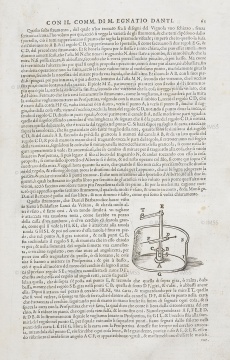Perspectograph by Jacopo Barozzi Da Vignola
From Inventions
Has no specific name.
Contents |
Inventor
Giacomo Barozzi da Vignola (1507-1573)
Historic Period
1560-1570
Description
Illustrated and described by Egnazio Danti in his commentaries to Vignola’s Le due regole [The two rules], the instrument was invented by the Emilian painter perhaps prior to 1570, the date of the last edition of his treatise. Danti describes it as a variant of Albrecht Dürer’s “window”: "This sixth instrument, of which I have found in Vignola’s drawings a sketch, without any note, I have decided to place here, to show the variety of the instruments, and that all of them depend on the window.” The resemblance to the “window” is in reality only in concept. In form, the instrument is quite different. The intersection of the visual ray and the viewing plane is measured by coordinates, as in Leon Battista Alberti’s veil, thanks to two orthogonal graduated rods sliding into each other. The horizontal rod, fixed, has a groove into which slides the vertical rod, and the latter also has a groove into which slides a small indicator. To draw any point whatsoever of an object, the painter turns the roller until the vertical rod is tangent to the point observed. An assistant moves the indicator to “touch” the same point, and then transcribes on a grid the coordinates determined by the...(continues)
Bibliographical Resources
Vignola, Giacomo Barozzi da. Le due regole della prospettiva pratica. Con i comentarij del R.P.M. Egnatio Danti. In Roma, per Francesco Zannetti, 1583, p. 61.
Images
Author of the entry: Filippo Camerota

